|
A new pressure group made up of UK beekeepers - Honey Authenticity Network UK (HAN UK) - is calling for better information for shoppers starting with stricter labelling for honey blends.
Two members of Somerset BKA are members of HAN UK – Lynne Ingram is Chair and Anne Pike is a committee member. The group’s first outing in the media was in the Observer on Sunday, November 29, ’21. ”British beekeepers are calling for a requirement on supermarkets and other retailers to label cheap honey imports from China and other nations with the country of origin after claims that part of the global supply is bulked out with sugar syrup. The UK is the world’s biggest importer of Chinese honey, which can be one sixth of the price of the honey produced by bees in Britain. Supermarket own-label honey from China can be bought for as little as 69p a jar. Supermarkets say every jar of honey is “100% pure” and can be traced back to the beekeeper, but there is no requirement to identify the countries of origin of honey blended from more than one country. The European Union is now considering new rules to improve consumer information for honey and ensure the country of origin is clearly identified on the jar.” To read the article in full, click here. Meanwhile, the group has set up a Facebook group to raise awareness of honey adulteration. Anyone interested in the subject is warmly invited to join. Asian hornet awareness week is an excellent reminder to look out for the non native and highly destructive hornets when in the garden and out and about: check flowers, ivy, in wasp traps and fallen fruits.
At this time of year Asian Hornet nests are growing bigger and there are many hungry mouths to feed. This means that if we have any Asian Hornets in the UK, they will be out and about collecting food, and are more visible. They can be spotted feeding on flowers, on the ivy once it is out, and also on fallen fruit. They can also be spotted near beehives, where they will try and catch honey bees as they return to the hive full of nectar. Asian Hornets look like a big wasp, but are mainly black with orangey yellow faces, and a broad orangey yellow band across the base of the abdomen. The bottom part of the legs is yellow. If you spot what you think is an Asian Hornet please Take A Photo, then report it through the FREE AsianHornetWatch app. If it is an Asian Hornet then someone will come to check it out for you. If you are not sure what it is, Take A Photo anyway. You can compare the photos on the app with what you have seen. If you need help with this contact your local Asian Hornet Team https://www.bbka.org.uk/asian-hornet-action-team-map. For Somerset contact [email protected] Somerset BKA's Asian hornet action team co-ordinator Lynne Ingram is urging us all to start monitoring for Asian hornets:
"We're approaching the time when Asian hornet queens will be emerging from hibernation – when the temperature is consistently reaching 13 deg C – and so we need to be monitoring for their presence. We don’t know if there are any Asian hornet queens over-wintering in the UK this year, or whether any mated queens will make their way into the UK post-hibernation. But we need to be prepared. Monitoring traps We strongly recommend the use of monitoring stations, rather than killing traps. This allows us to get the evidence of Asian hornets that we need, without killing our native beneficial insects, in particular European hornets. Asian hornet queens will be searching for sugary foods to build up their energy, not preying on your bees. This means that all monitoring stations need to be positioned where you cannot help but see them and where you can easily check them daily - e.g. outside the kitchen window, or in a sunny spot in your garden. All beneficial insects must be released from monitoring stations daily. From mid-May Asian hornet queens will be mainly in their nests and so monitoring stations can be removed. We are recommending the adaptation of Thorne's traps to include the wick stations inside. This allows wasps and small flies to escape. (See photos above). Liquid bait Use Suterra (now sold as Trappit wasp attractant). Get this from your AHAT Team leader if restrictions allow (keep yourself and others safe and comply with government guidelines) or buy online (Pestfix.co.uk sells smaller bottles). If you cannot get it due to current restrictions try one of these French recipes: • Dark beer mixed with 25ml strawberry dessert sauce and 25ml orange liqueur • 350ml sweet white wine (or white wine sweetened with sugar) + 20-30ml mint syrup Please also observe any flowers where Asian hornet queens may be feeding. Any trees that may be oozing sap are also very attractive to queens in Spring. Being confined to our homes at the moment gives us the ideal opportunity to spend time monitoring for Asian hornets. Summer From the August onwards, Asian hornet workers may be found preying on your bees, so monitoring stations may also be hung in your apiaries. Again, we need to be monitoring regularly so that we protect our beneficial insects, and so that we have live samples that could be tracked if necessary. Please register your monitoring stations in apiaries on BeeBase. What to use • Monitoring stations as above • Open bait stations – plastic tray with screwed up kitchen roll, a stone and your liquid bait. Ideally protect these from rain - on a bird table Autumn In the Autumn Asian hornet workers can be observed on fallen and growing fruit and on ivy plants, where they will often be seen taking prey. Males and new queens will be produced in the late Autumn and males can be seen feeding on flowers. This is a crucial time to spot Asian Hornets as it is important to find any nests before the queens emerge and go into hibernation. Observe plants, fruit and also around your apiary. If you think you have seen an Asian Hornet: • Get a photo (or sample) • If you are not sure or are struggling to get evidence contact your local Asian Hornet Action Team – [email protected] • If you are sure and you have evidence, then report on the Asian Hornet Watch App or on [email protected] – and to your local AHAT. Due to current restrictions please make sure that you keep yourself safe and comply with government guidelines. Check BBKA website for updates on how this relates to beekeepers." Three hives complete with bees and their hive stands were stolen from Pat Rich’s apiary near Chilcompton sometime between March 1 and March 20. They were taken from a fenced and gated (locked) apiary out of sight of the road from within a field which itself was fenced and securely gated.
The hives are nationals in red cedar and each had a small circular metal disk marked ‘Wansdyke Precision Engineering’. These will probably have been removed but may have left behind a small darker or lighter circle. If anyone is offered hives similar to this, we’d be grateful if you could let me (07555 966 964) or Pat know at [email protected] Thank you Mark Hitchens, Secretary, Mendip Division. Image copyright: Véto-pharma This is the first in a series of educationally-based articles written by Master Beekeeper Tricia Nelson from Quantock Division. The end of one beekeeping season and the start of another; time to reflect on what happened this year and what you want to do next. What went well for your bees? What didn’t? What might be worth trying next year? So, what sticks out in my recollections of the year which might be of interest to you? Driving bees We have all learned that bees walk uphill into dark spaces. Hence smoking swarms up into skeps, tucking your trousers in your socks and covering your wrists so they don’t walk up your trousers and sleeves. Some of us have shaken a swarm out onto a sheet arranged over a sloping board leading up to a new hive and watched them slowly processing into the hive and how they surge up and in once the queen enters. However, seeing exactly the same behaviour in response to a rhythmic and persistent tapping on the sides of the skep with no smoke used at all was extraordinary. It was so quick, almost instantaneous. I hope you enjoy the videos and the photos. Saving the brood comb Equipment needed:
I thought this was an extremely useful technique to learn, very difficult in the hot conditions facing David during his demo, but particularly useful if you have do a cut out when retrieving a swarm, so perhaps it is worth keeping a few strung frames, a flat board and a knife on standby for just such occasions!
At the start of Asian hornet week (Sept 9-15) Somerset Beekeepers Association has published a suite of Asian hornet resources we've produced and are happy to share.
Meanwhile our Asian hornet actions teams are busy following up on reports from local people. For example, in the Minehead and Exmoor area there have been several unconfirmed sightings which the local AHAT is investigating. Our Asian hornet roadshow rolls into Taunton's Farmers Market on Thursday & Somerset County Show on September 21-22. The NBU found and destroyed an Asian hornet nest in Tamworth, Staffordshire last week. In Jersey they have caught 69 queens and discovered 54 nests so far this year. While here in Somerset we haven't had a confirmed sighting yet but fear it is just a question of time. If you spot an Asian hornet, perhaps feeding on flowering ivy, take a photo and report through the Asian Hornet Watch app or [email protected]. If you need some help, contact us direct [email protected] Anne Rowberry, Somerset AHAT member and BBKA Vice Chair writes:
"An Asian hornet sighting was confirmed in the Tamworth area of Staffordshire on September 2, 2019. This is the first report since July, when a single hornet was confirmed in New Milton, Hampshire. In each case they were spotted and reported by a member of the public. Since 2016, there have been a total of 15 confirmed sightings of the Asian hornet in England and six nests have been destroyed. Nine of these sightings occurred in 2018; an individual hornet in Lancashire (April) and Hull, three in Cornwall, two in Hampshire, one in Surrey (all September) and one in Kent (October). The risk of an active Asian hornet nest being found in the UK is negligible during the colder winter months, but higher during the summer. Asian hornets have already been spotted this year in countries close to the UK (France and Jersey) and a risk remains at all times of year of accidentally transporting an Asian hornet when returning to the UK from abroad. It is crucial you report any possible sightings so our experts can take quick and effective action to eradicate Asian hornets." Asian hornets are a notifiable invasive species and should be reported immediately, preferably with a photo: Asian Hornet Watch app for iPhone Asian Hornet Watch app for Android or [email protected] the online recording form http://www.brc.ac.uk/risc/alert.php?species=asian_hornet [email protected] Congratulations to Mark and Christine Gullick from Burnham Division who were awarded the Bronze Bee for winning the most points at Bristol’s Bee and Pollination Festival on Saturday.
They beat extremely tough competition to scoop seven firsts, five seconds, three thirds and one highly commended. Next stop: the National Honey Show! In this month's SBKA newsletter, AHAT co-ordinator Lynne Ingram says public enquiries are coming in.
"The AHATs have been busy fielding calls or emails from members of the public who believe they have spotted an Asian Hornet. Most have been European hornets or hornet mimic hoverflies. The Exmoor team headed out to check out a possible sighting but after a day in the area did not find anything. The photo in that case seemed to show a melanistic European Hornet with the yellow headband visible. These almost all black European hornets have added to identification confusion, but they are distinguished from Asian Hornets by a having brown legs and a yellow ‘headband’." Asian hornets (Vespa velutina nigrithorax) are slightly smaller than native European hornets and look like large black wasps with an orange face and yellow legs:
If you see an Asian hornet, take a photo and report it on the Asian Hornet Watch app or contact [email protected] for further advice. For the first time we're staging a second exhibit exclusively focusing on Asian hornets (Vespa velutina nigrithorax) at the Royal Bath & West Show which runs from tomorrow until Saturday (May 29-June 1) in Shepton Mallet.
We want to alert visitors to the imminent arrival of Asian hornets in the UK this season with huge banners, Asian Hornet Action Team co-ordinator Lynne Ingram's glass cases displaying pinned Asian hornets and other insects, leaflets and cards to take away and children's colouring-in sheets. Our AHAT will be on hand to talk to beekeepers and the public about Asian hornets - how to identify them, how to report them, the threat they pose to our honeybees and other pollinators. In Jersey 70 plus Asian hornet queens have been discovered already this year; in France, where Asian hornets arrived in 2004, honey production is down by 50 per cent which reflects the impact these hornets are having on honeybee numbers. Asian hornets are a notifiable invasive species and should be reported immediately with photo using: Asian Hornet Watch app [email protected] [email protected] |
Archives
March 2024
Categories
All
|
Somerset Beekeepers Association Charity © 2021 Registered CIO Charity 1206483
Affiliated to the British Beekeepers Association
Click here to view our Privacy Policy
Affiliated to the British Beekeepers Association
Click here to view our Privacy Policy
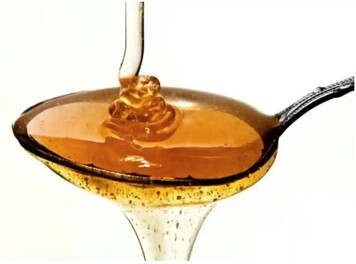
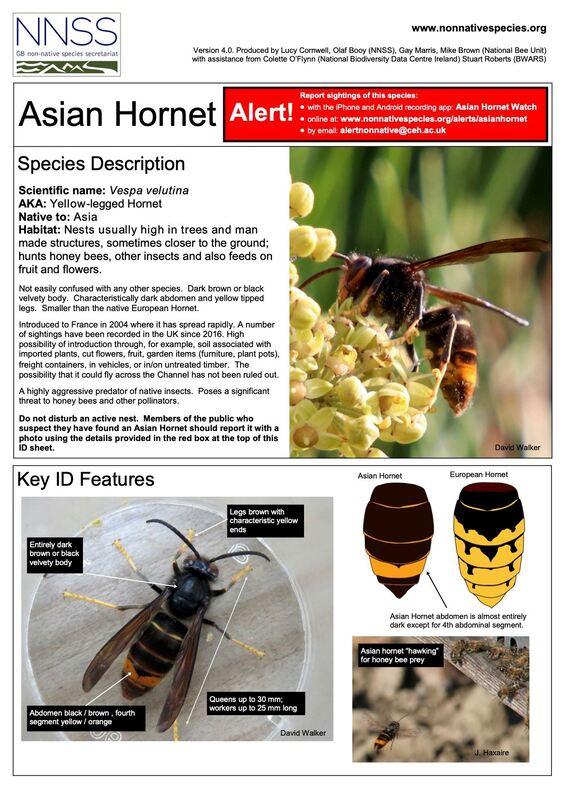

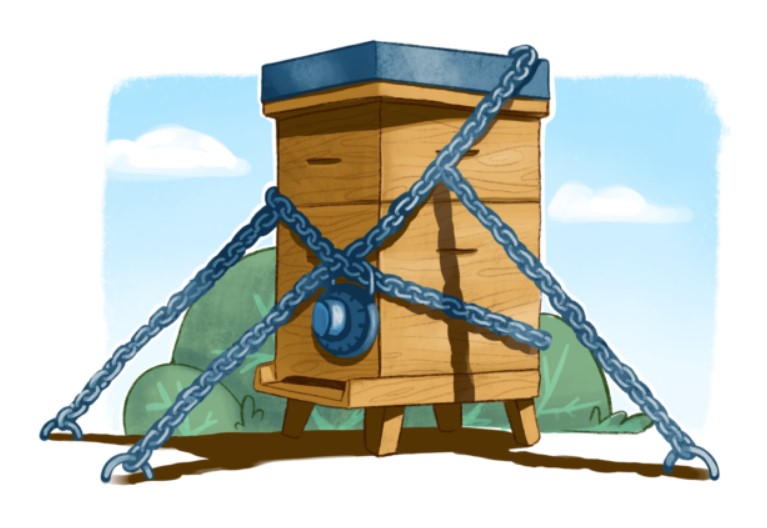
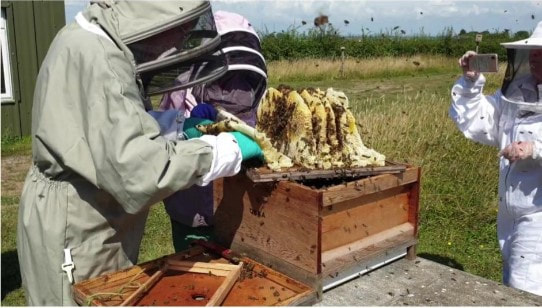
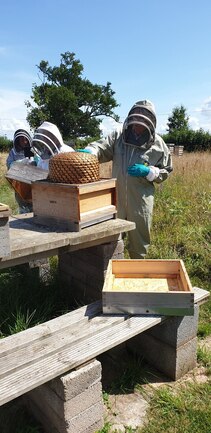
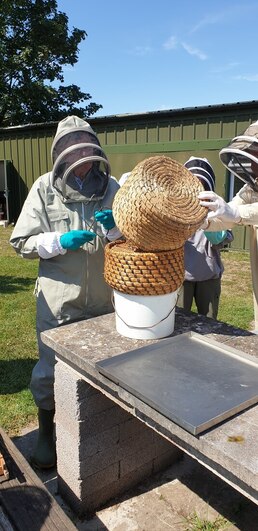
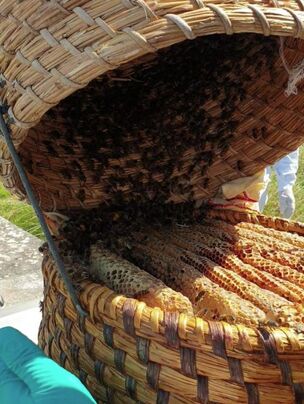

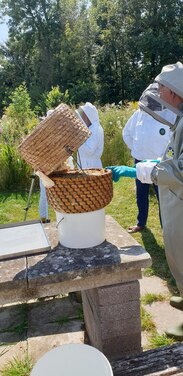

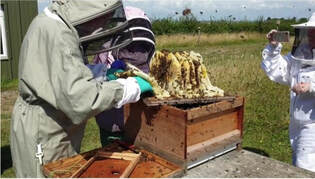
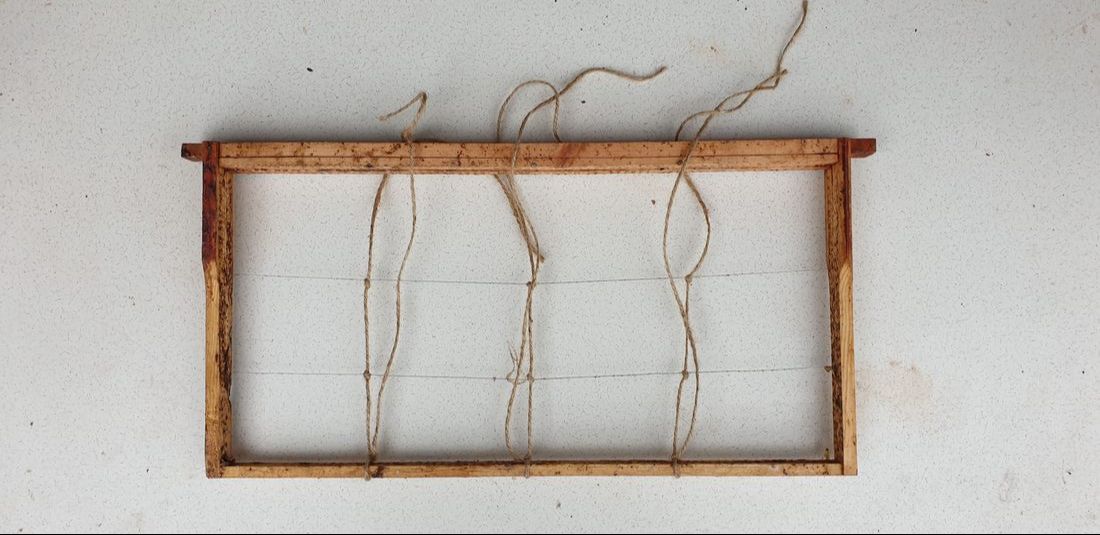
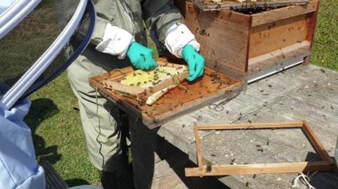
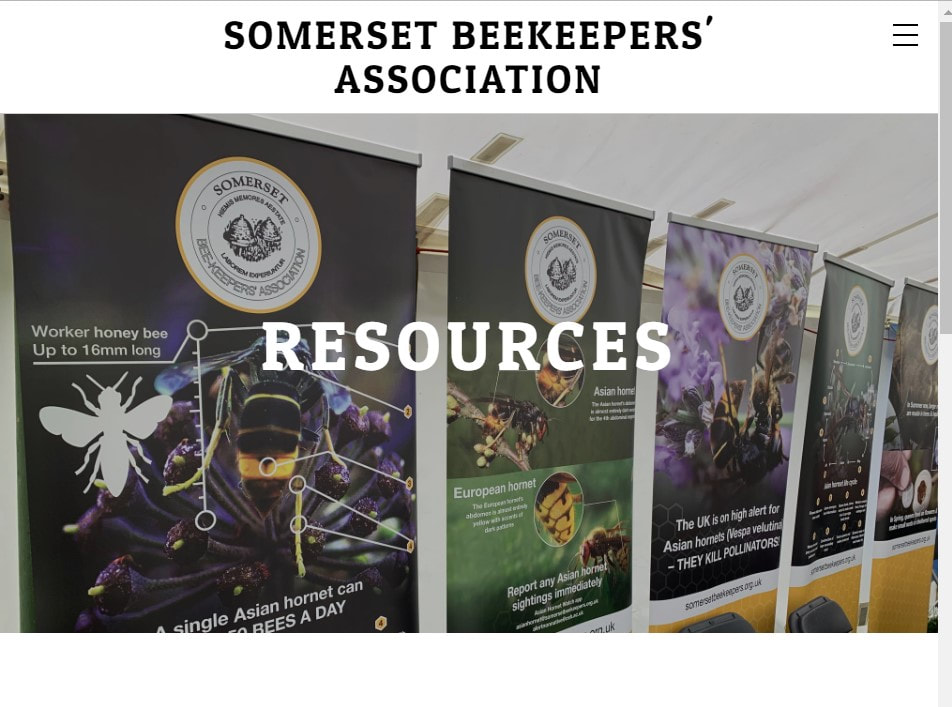
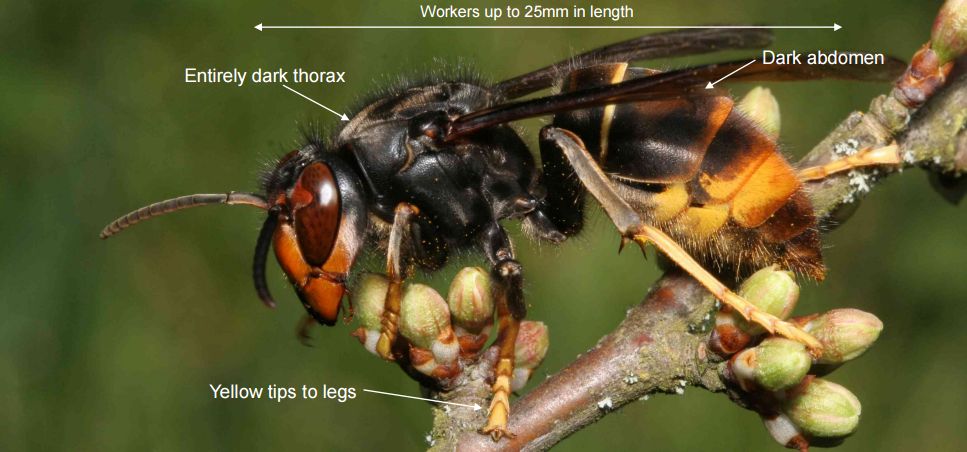
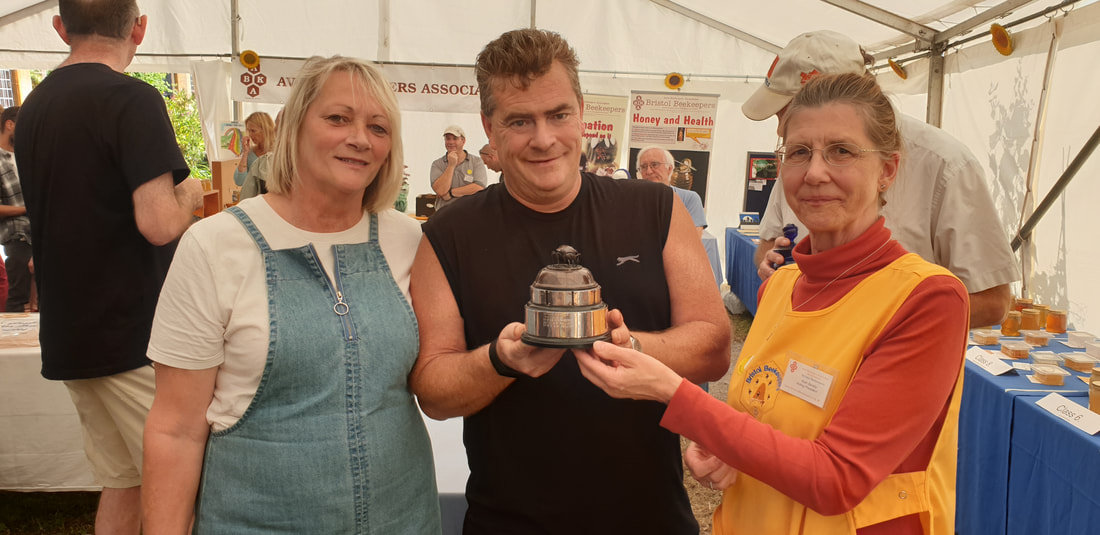
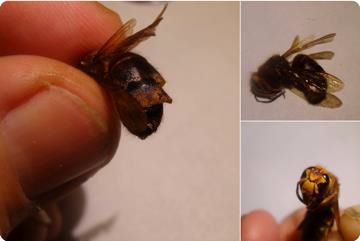
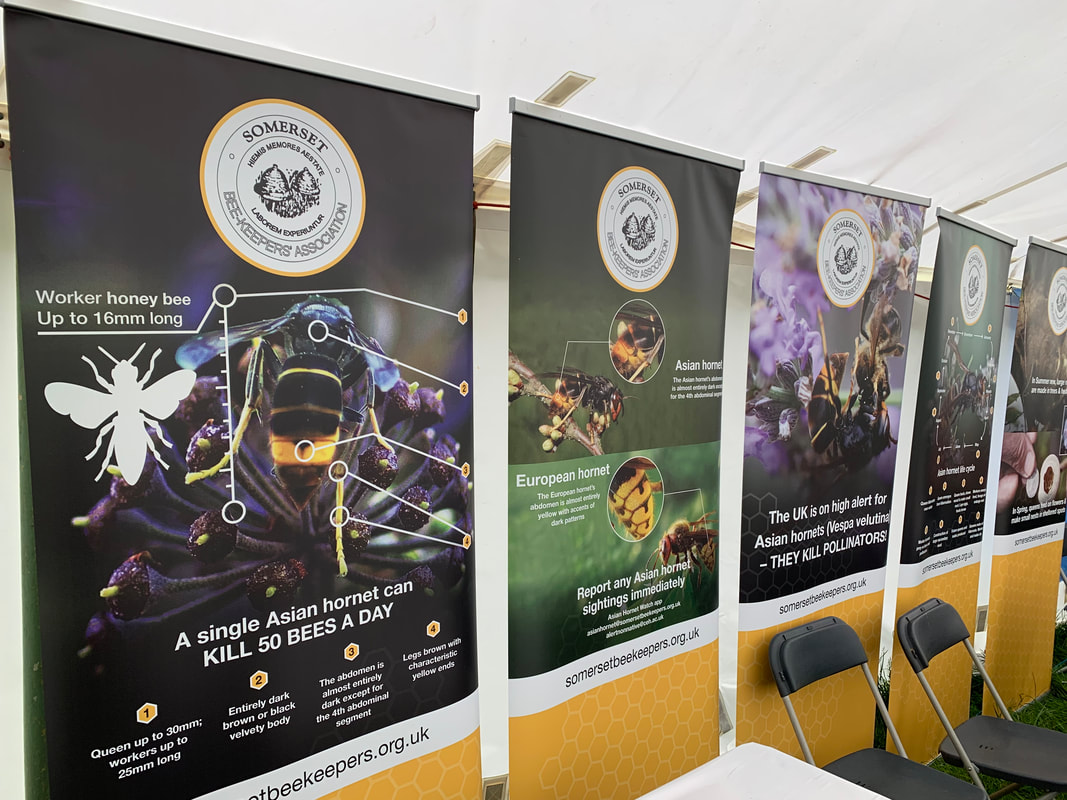
 RSS Feed
RSS Feed
